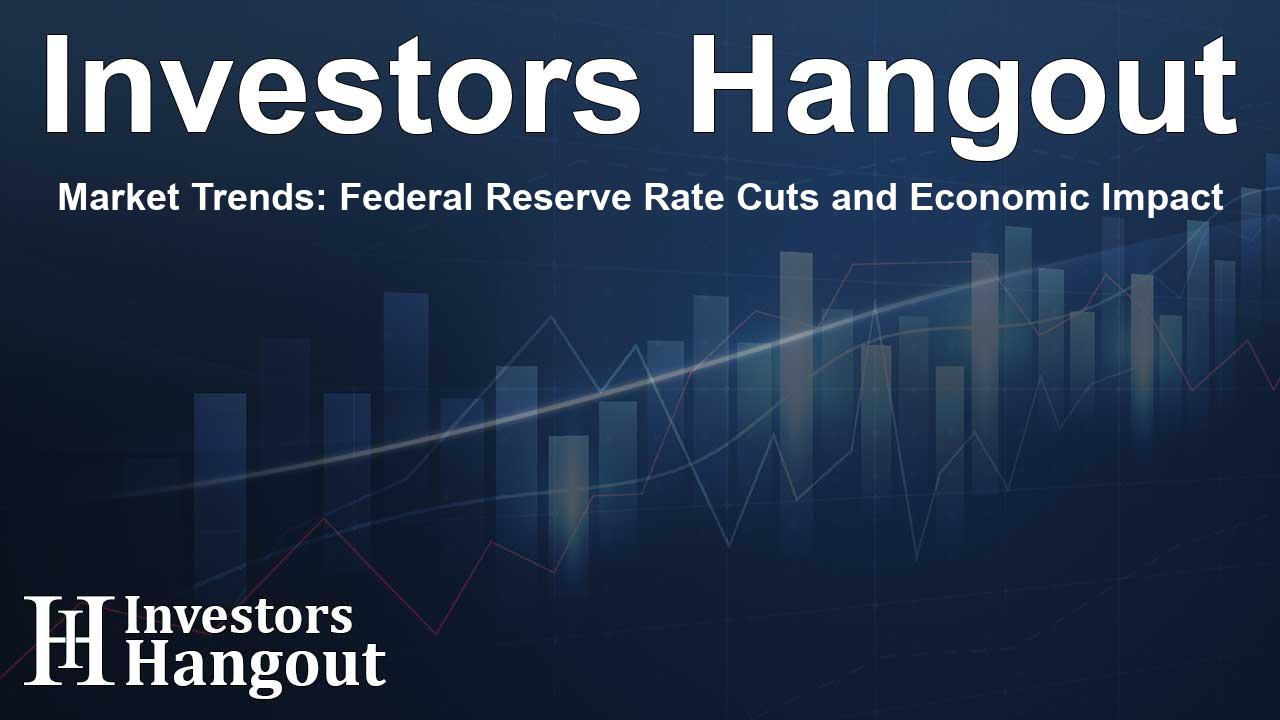Market Trends: Federal Reserve Rate Cuts and Economic Impact

Understanding Market Reactions to Federal Rate Cuts
From a broad perspective, the financial markets are abuzz with anticipation regarding the Federal Reserve's forthcoming decision on interest rates. As investors eagerly await the Federal Reserve's next move, there's a palpable sense of excitement regarding how these changes may influence both U.S. and global markets.
Wall Street Anticipates Rate Easing
With speculation around the first easing of rates, Wall Street has showed optimism, reflecting in the performance of key indices like the S&P 500, which recently reached new heights. The prospect of decreased borrowing costs has not only bolstered stock prices but also sparked discussions about the underlying economic indicators that could warrant such actions.
Positive Economic Signals
Despite concerns about economic stability, recent data has revealed surprising growth in various sectors. Retail sales showed unexpected increases, while manufacturing output outperformed expectations, painting a picture of resilience in the economy. Following this, forecasts for third-quarter growth have surged, indicating a robust economic environment.
Interest Rate Predictions and Market Movements
Market futures are currently leaning towards a significant cut of 50 basis points from the Federal Reserve, as opposed to the more customary 25 basis points. This sentiment, buoyed by recent economic indicators, suggests that a larger reduction is more likely than previously thought, reflecting a shift in investor expectations.
The Role of Federal Reserve Economists
Former Fed economist Claudia Sahm, among others, has publicly supported the idea of a 50 basis point reduction, emphasizing the need for proactive measures to maintain employment levels. As advocates for aggressive easing gather momentum, the financial landscape is poised for a transformative moment.
Long-Term Implications for Investors
The historical data surrounding the first Fed rate cuts shows a favorable trajectory for stocks, typically leading to positive market returns. Interestingly, even during times of recession, stocks have demonstrated resilience following rate cuts, often leading to significant gains when cuts occur in the absence of economic downturns.
Market Sentiment and Fed Policymakers’ Outlook
The response of stock and bond markets hinges not only on the magnitude of the cut but also on the future rate projections indicated by the Fed's dot plot. A clear communication strategy from the Fed will be essential to keeping market sentiment stable, especially if future cuts are hinted at rather than immediately enacted.
Global Market Reactions
Meanwhile, international markets display mixed reactions amid fluctuating economic signals. The pound gained strength, while movements in the yen were influenced by recent trade data falling short of expectations. The ongoing developments in various economic sectors will undoubtedly continue to influence global market stability.
Key Developments to Watch
As the Federal Reserve convenes for its policy decision announcement, investors will be keeping a close eye on a multitude of economic indicators that could affect their strategies going forward. The potential implications of these announcements may usher in a period of optimism or caution, depending on the Fed's approach to managing the economic landscape.
Frequently Asked Questions
What is the significance of the Federal Reserve's interest rate cuts?
The Federal Reserve's interest rate cuts are crucial as they can directly impact borrowing costs for consumers and businesses, influencing economic growth and investment decisions.
How do stock markets typically react to Federal Reserve rate cuts?
Historically, stock markets tend to perform well following initial rate cuts, often leading to positive returns, particularly if cuts occur without accompanying recessionary conditions.
What are current predictions for the upcoming Federal Reserve meeting?
Market expectations are leaning toward a possible 50 basis point cut in interest rates, reflecting optimism about the economic indicators and the Fed’s proactive stance.
How do economic indicators affect market sentiment?
Economic indicators, such as retail sales and manufacturing output, provide insights into the health of the economy, influencing investor confidence and market performance.
What role does the dot plot play in interest rate predictions?
The dot plot provides insight into the Federal Reserve policymakers' expectations for future interest rates, guiding investor expectations and market reactions.
About Investors Hangout
Investors Hangout is a leading online stock forum for financial discussion and learning, offering a wide range of free tools and resources. It draws in traders of all levels, who exchange market knowledge, investigate trading tactics, and keep an eye on industry developments in real time. Featuring financial articles, stock message boards, quotes, charts, company profiles, and live news updates. Through cooperative learning and a wealth of informational resources, it helps users from novices creating their first portfolios to experts honing their techniques. Join Investors Hangout today: https://investorshangout.com/
Disclaimer: The content of this article is solely for general informational purposes only; it does not represent legal, financial, or investment advice. Investors Hangout does not offer financial advice; the author is not a licensed financial advisor. Consult a qualified advisor before making any financial or investment decisions based on this article. The author's interpretation of publicly available data presented here; as a result, they should not be taken as advice to purchase, sell, or hold any securities mentioned or any other investments. If any of the material offered here is inaccurate, please contact us for corrections.